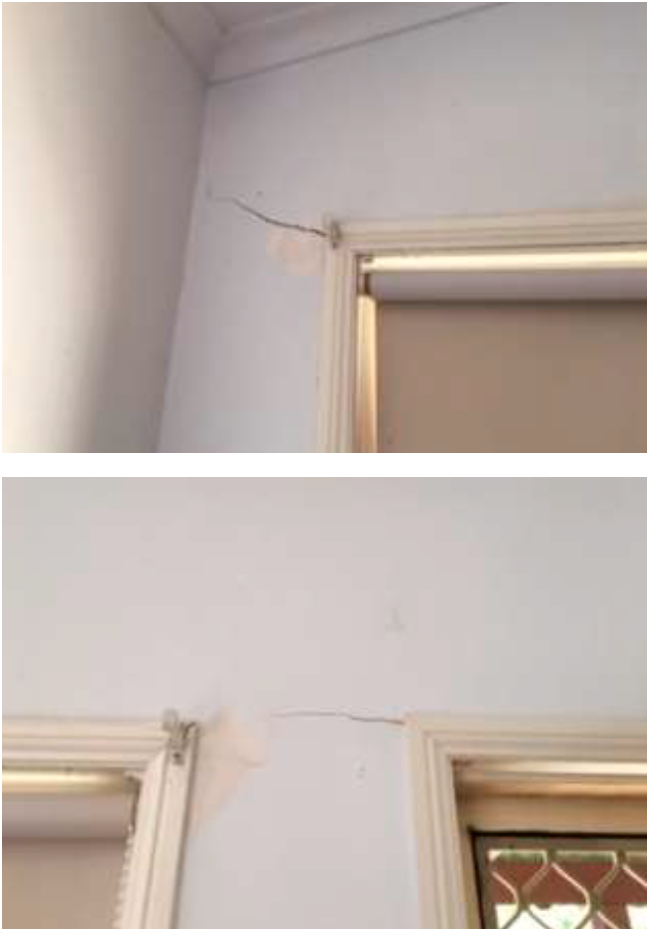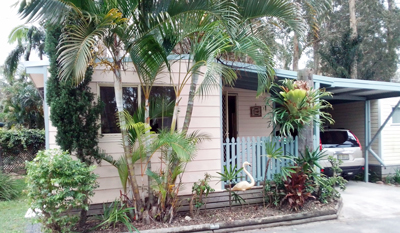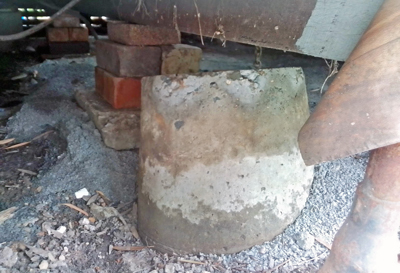Unstable ground
24/08/2021
Land lease living is often talked about as an affordable housing option, particularly for retirees who want to downsize and free up funds. New, modern homes can be expensive but, when compared to the cost of traditional house and land options, even the top end homes are often cheaper. Other contributors to affordability include the ability to claim Commonwealth Rent Assistance to help meet the cost of site fees, no stamp duty is payable when purchasing a home, and home owners do not have to pay council rates.
Information on the Land Lease Industry Association of NSW (LLIA) website focuses heavily on the affordability aspect spruiking “the opportunity to downsize the home while supersizing the lifestyle”, the ability to “enjoy all the facilities and services without any of the work to maintain them” and “the opportunity to release funds tied up in the family home to fund a retirement lifestyle free of financial insecurity”.
Additionally the LLIA website advises potential home owners they don’t have to buy the land – “You buy a new or established house within a secure community and instead of buying the land you pay a weekly or fortnightly site fee to lease the land where your house is”.
All of this is true and these are some of the reasons people choose land lease living. The question we have is: if you are not the landowner, how can you be responsible for fixing problems such as soil or ground subsidence and structural retaining walls? The short and obvious answer is that you are not, but that is not the experience of a growing number of home owners who are facing large bills to fix problems with the land under or around their homes.
Subsidence

Simply defined, subsidence is a downward shifting of ground. It may occur as a result of water erosion, tree roots and other vegetation, or a failure to properly compact the ground to create stable footings. Whatever the cause, the outcome is the same – the home sitting on land that is subsiding will be impacted. Those impacts may include walls bowing and cracking, door frames detaching from walls or cracking, and floors moving and sloping.
In mid-2020 a home owner in a land lease community in the Tweed area contacted the operator regarding subsidence issues on the site she was leasing. She had contracted a building consultant to carry out an inspection of her home and site and his report confirmed there had been some soil settlement on the site that had caused damage to the home including cracks to walls and door frames and significant sloping of floors inside the home and on the verandah. The home owner asked the operator to “kindly make arrangements to rectify the issues”.
The operators’ response came in the form of a letter from a solicitor advising the home owner that she had been advised previously “that subsidence was a matter for you to deal with”.
Home owners in another community, owned and operated by Hometown Australia, have been dealing with similar problems. In September 2020 they noticed that subsidence was occurring to the ground surface beneath their home. They wrote to the operator and asked for an urgent response to subsidence issues occurring on the site.
The home owners spoke with Ms Lauren Toussaint for Hometown in October 2020 and the operators’ position was that further consideration was required to ‘determine responsibility’ for the subsidence occurring on site. The matter dragged on for another month and it became clear to the home owners that the operator was not going to rectify the subsidence problems and was avoiding responsibility. The ground surrounding and below the central footing had subsided by up to 150mm over an area of approximately 1 metre in diameter.
The home owners applied to the Tribunal. Hometown instructed a geo technical engineering company to prepare an expert report for the Tribunal proceedings. The expert report confirmed that ground soil subsidence had occurred, however the focus of the report was placed primarily on some footings of the home ‘no longer supporting the steel beam bearers’. The home owners could not afford the exorbitant cost of obtaining an expert written report and whilst the Tribunal noted in a Notice of Order in April 2021 that the core issue for determination is the cause of subsidence under the site, the proceedings became too stressful for the home owners and they decided to withdraw their application prior to the hearing.
The operators’ written submission to the Tribunal included an assertion that the footings to the home are the cause of the subsidence and recommended that the footings be designed to suit the subgrade. The home owner says, “the subsidence came first, the footings did not fail until such time as the site subsidence occurred. There are other instances of significant subsidence around the community that can be seen in carports, yards and in common areas. I’ve spoken with another home owner, a retired architect, and he’s aware of some subsidence under his home.”

In March 2021 Brigadoon Holiday Park at North Haven became flooded following a huge storm that affected much of the mid north coast of NSW. Mark, a home owner at the community for 16 years became concerned when a sink hole appeared on the site he rents, affecting three of the piers supporting his home. Mark approached the community operator for assistance. The operator responded by telling Mark he had 90 days to remove his home, at his own expense, if the site is to be repaired.

Mark told us, “I have always been a good tenant and nobody deserves to be treated like I have been treated since I raised this problem”.
Structural integrity
Structural integrity is about the ability of a structure to hold together under a load without breaking, or excessively distorting. It’s about the structure being able to perform the function for which it was designed.
There are numerous structures within land lease communities with a clear delineation between those owned by the operator and those owned by home owners. We think it’s fair to say that the owner of a structure is the person responsible for maintaining the structure to ensure that it is fit for purpose. However, some operators and the LLIA see things differently. A number of home owners have contacted the Tenants’ Union regarding responsibility for structural retaining walls.
In all cases these walls are essential to the integrity of the site i.e. they stop it collapsing, and all are made from wood. When home owners have approached operators with concerns the walls are deteriorating and may no longer be doing the job for which they were designed, the home owners have been told fixing or replacing the walls is their responsibility.
In November 2020 prospective home owners were viewing a home in a community on the Central Coast when they noticed a structural retaining wall looked like it was starting to come apart. They asked the operator who was responsible for the wall but it wasn’t until after they had paid the deposit for the home the operator responded and advised they (the home owners) were responsible. By that time it was too late to pull out of the sale without losing their deposit so the (now) home owners sought quotes for the repairs, which ranged between $10,000 and $12,980.
The home owners wrote to the operator and suggested they had failed in their obligation to provide the residential site in reasonable condition at the commencement of the site agreement. The operator rejected this claim saying there are no immediate safety issues and that the wall has “moved/bowed most probably as a result of settlement of the site after the wall was built”.
While there may not be an immediate concern in this case, there is a concern that down the track this wall will need to be replaced, and that it is the home owners who will have to foot the bill. Despite the statements on the LLIA website that home owners only lease the land and can enjoy all the facilities without the any of the work to maintain them, the 2017 site agreement provided by the LLIA for use by its members (community operators) contains the following additional term:
“Acknowledgement of your property
You agree 58.1
that any dwelling, associated structure, shed, driveway, pathway, retaining wall or any structure or fixture including but not limited to any hardscape (for example concrete slabs) or landscape on the site; and
58.2 that any plumbing or wiring that connects your dwelling or any of your structures to the utility services provided by the residential community is your property; and
58.3 that any item identified in cl. 58.1 or 58.2 are your responsibility to maintain in a condition satisfactory to us, having regard to their condition at the time they were installed on the site.”
Not only does this term purport to transfer ownership of site infrastructure from the operator to home owner, the home owner is then additionally required to maintain that infrastructure to the standard determined by the operator. This is done without reference to the time it was installed on the site, regardless of how long ago that was, or even the actual condition at the time the home owner entered into the site agreement. The question is whether this term is valid, or whether it is an attempt to contract out of the Residential (Land Lease) Communities Act.
The Act is silent on whose responsibility it is to maintain a residential site, or what structures form part of the site. However, the standard form condition report in the Residential (Land Lease) Communities Regulation 2015 provides some clarity. It states “This form is only for use in relation to a residential site and not the home or any fixtures on the site”. In the section “condition of the residential site” which is to be completed by the operator and home owner the items listed are: landscaping/garden; driveway; lawn; site slab (concrete). It is clear from this that the slab, driveway, and other items that are not fixtures, are part of the residential site.
The Tenants’ Union believes the Act needs to provide greater clarity regarding an operator’s responsibility to maintain community infrastructure including residential sites and that the transfer of ownership and responsibility for maintenance of structures such as slabs and structural retaining walls should be prohibited. Only then can home owners be certain that when they purchase the home, they are free to enjoy a “retirement lifestyle free of financial insecurity.”
This article was published in Outasite magazine issue 7. Outasite is published annually. Outasite Lite email newsletter, is sent several times a year – subscribe here. All past issues are available in the archive.
